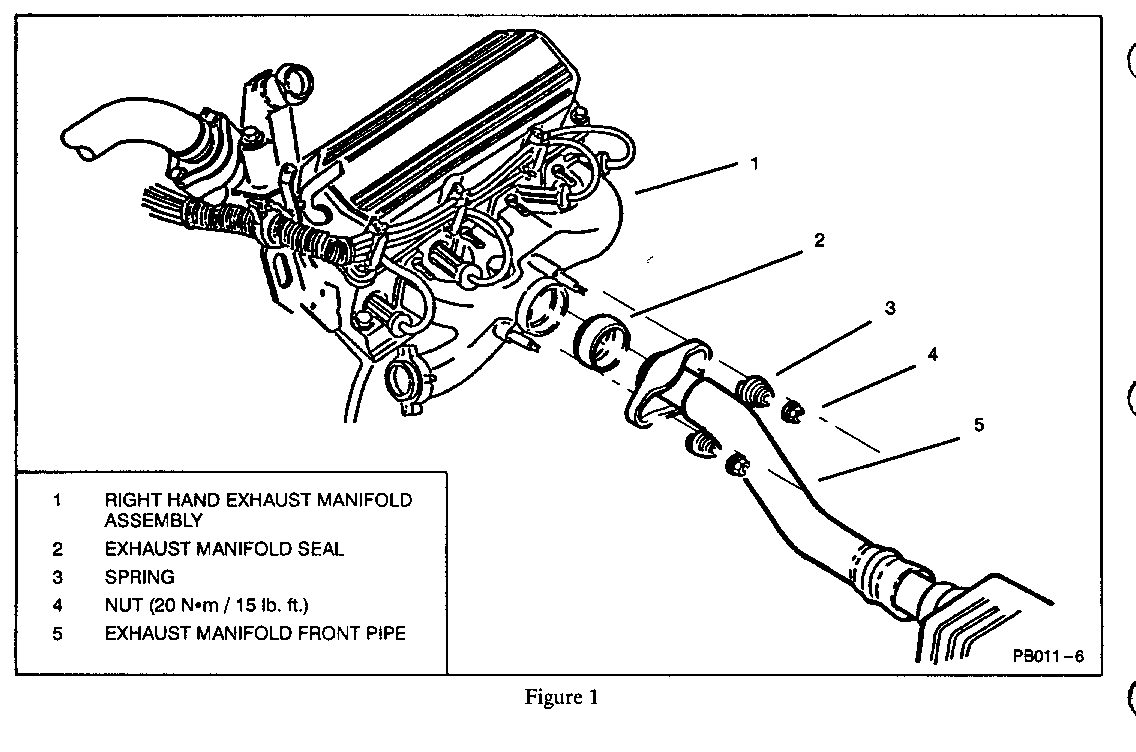EXHAUST SYSTEM LEAK/INTERMIT. POP NOISE ON ACCELERATION

SUBJECT: EXHAUST SYSTEM LEAK/INTERMITTENT POP NOISE ON ACCELERATION
MODELS AFFECTED: 1991-1993 DE VILLES (FWD) AND FLEETWOODS (FWD)
Some 1991-1993 Front Wheel Drive DeVilles and Fleetwoods may experience one or more of the following conditions:
o Exhaust system leak at right manifold to take-down pipe (front pipe).
o Pop-type noise on acceleration take off
o Intermittent pop noise on acceleration that may be hard to diagnose because it travels down the exhaust causing the noise to sound like it's coming from different positions.
These conditions may occur due to the front pipe to right manifold positioning, especially at the exhaust seal. Without proper installation, the exhaust seal could lock up into the front pipe and cause an exhaust leak and/or noise condition. In addition, the front pipe and flange positioning relative to the right manifold may not be properly set. If misaligned, the springs may become loose and cause a noise condition.
If the above conditions exist, then check the front pipe and flange/springs positioning in addition to the exhaust seal. Investigate for possible flange or seal damage. If OK, clean any corrosion or debris from joint and install a new seal if necessary.
To repair this condition use the following procedure:
1. Raise vehicle.
2. Support catalytic converter.
3. Disconnect 0-ring type hangers from converter clamp.
4. Disconnect front exhaust pipe from exhaust right manifold. Refer to Figure 1.
5. Inspect flange and exhaust seal. Replace seal if necessary (seal P/N 3527193).
6. Connect front exhaust pipe to exhaust right manifold and tighten nut to 20 Nm (15 lbs. ft.).
7. Connect 0-ring type hangers to converter clamp.
Parts are currently available from GMSPO.
For warranty purposes use Labor Operation L2090 at .3 hour.

General Motors bulletins are intended for use by professional technicians, not a "do-it-yourselfer". They are written to inform those technicians of conditions that may occur on some vehicles, or to provide information that could assist in the proper service of a vehicle. Properly trained technicians have the equipment, tools, safety instructions and know-how to do a job properly and safely. If a condition is described, do not assume that the bulletin applies to your vehicle, or that your vehicle will have that condition. See a General Motors dealer servicing your brand of General Motors vehicle for information on whether your vehicle may benefit from the information.
